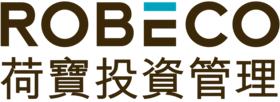The EU Sustainable Finance Disclosure Regulation (SFDR) standardizes metrics for assessing environmental, social, and governance (ESG) impacts of investments, ensuring funds' sustainability profiles are comparable. It mandates detailed disclosures, including identifying harmful impacts caused by investee companies.
The regulation forms part of the EU’s wider Sustainable Finance Framework which is backed by a broad set of new and enhanced regulations that apply across the 27-nation bloc. The SFDR goes hand in hand with the EU’s Sustainable Finance Action Plan which aims to promote sustainable investment across the EU, and a new EU Taxonomy to create a level playing field across the whole EU.
All the new measures are a response to the landmark signing of the Paris Agreement in December 2015, and the United Nations 2030 Agenda for Sustainable Development adopted earlier in 2015, which created the Sustainable Development Goals. The SFDR and other regulations are also aligned with the European Green Deal, which aims to see the EU carbon neutral by 2050.

SFDR regulation
SFDR is an evolving set of EU rules aiming to create a level playing field for how sustainable investment strategies are classified by asset managers. It helps to clarify the definition of a ‘sustainable fund’ and combat the growing threat of greenwashing.
Level I and Level II
Level I of the SFDR was introduced in March 2021. Its most visible and impactful element was the classification of funds and mandates in three categories, as laid down in Articles 6, 8 and 9 of the SFDR.
Article 6 funds: those that do not promote their environmental social or governance (ESG) characteristics.
Article 8 funds: where a financial product promotes, among other characteristics, environmental or social characteristics, or a combination of those characteristics, provided that the companies in which the investments are made follow good governance practices.
Article 9 funds: where a financial product has sustainable investment as its objective and an index has been designated as a reference benchmark.
Most Robeco funds are classified as Article 8, with many of the funds in the Towards Impact Investing range classified as Article 9, and only a handful classified as Article 6.
Level II of the SFDR was introduced in January 2023. The three articles remain in place, but a notable update is in stricter interpretations of what constitutes a wholly sustainable investment. Robeco subsequently updated its operational definitions for its range of funds that wish to be classified as Article 9.
This brought a change in that Article 9 funds must do one of three things. They can only include companies that have positive scores under the SDG Framework which measures the contributions that companies make to the Sustainable Development Goals. Alternatively, Article 9 funds can include funds that set a specific carbon reduction objective and use a Paris-Aligned Benchmark or a Climate Transition Benchmark. Finally, investments in green, social, and sustainability bonds are eligible.
Identifying adverse impacts
Identifying the impacts that fund managers and the companies in which they invest have on wider society was introduced under Level I in June 2021 and tightened under Level II from January 2023. These rules require an asset manager to describe its due diligence policy on how it will take the principal adverse impacts which investee companies have on sustainability factors into account when making investment decisions.
This are monitored using a system of 64 Principle Adverse Impact Indicators (PAIs), of which 18 are mandatory to report, and 46 are voluntary. The compulsory factors range from carbon emissions, fossil fuel exposure and waste levels (E) to gender diversity and due diligence over human rights (S) and a company’s record on exposure to corruption, bribery or other scandals (G).
Having already introduced PAI reporting at the company level in 2021, Robeco began reporting performance at the fund level in January 2023. Article 9 funds will address all the mandatory PAIs; Article 8 funds will report on actions taken to mitigate adverse impacts on an annual basis through regular fund reporting.
See also:




















